Voices from thefrontlines
Climate change is reshaping our world and exposing Africans, across the continent, to increased hardship. How can its people be empowered to face climate shocks and stressors and make informed decisions to move or stay now and in the future?
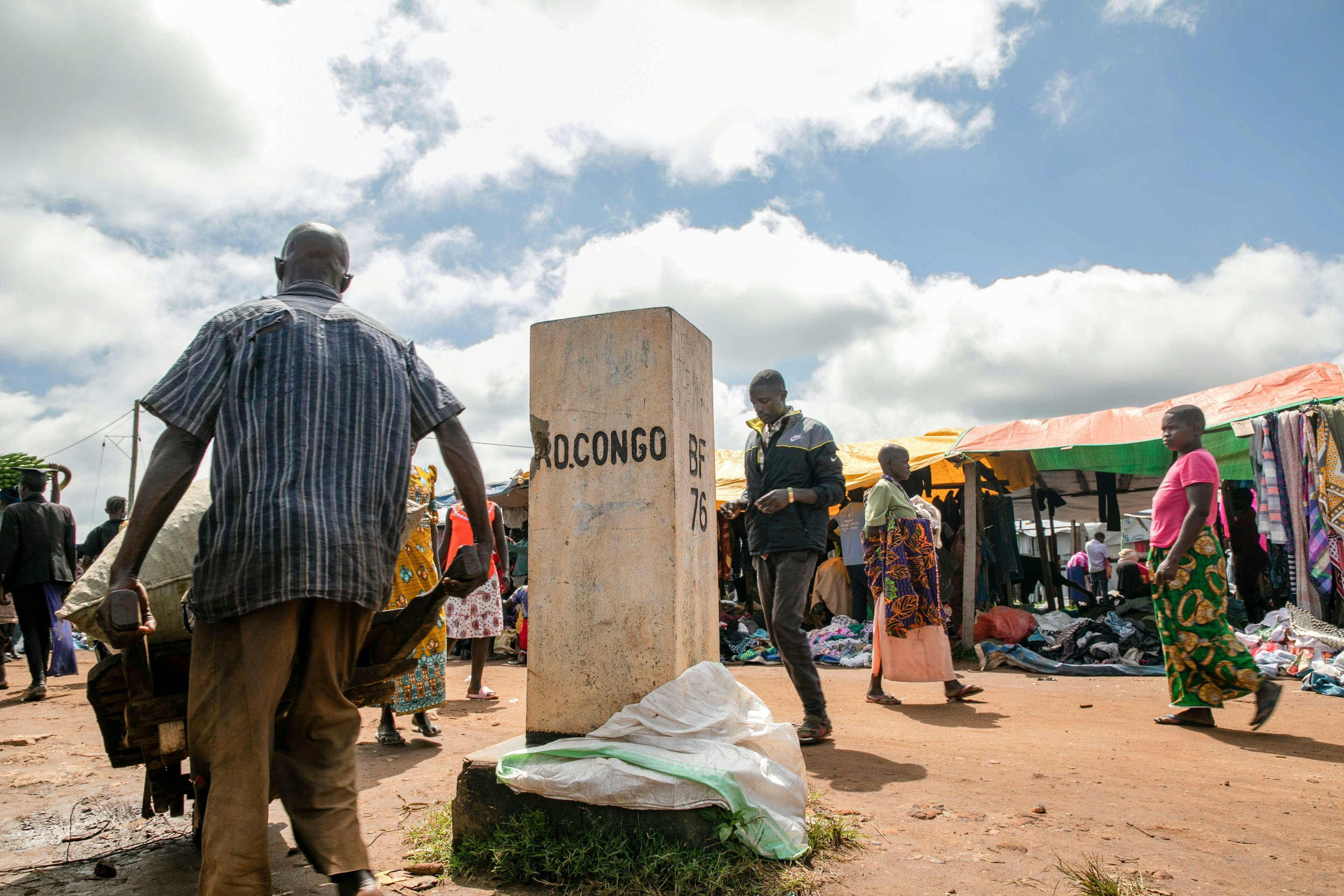
Big changes • 3.2
Cross-borderTies
Cross-borderTies
Border areas are mobility hubs
Introduction
Borderlands bustle with trade and movement but are also on the margin of state authority. Climate mobility will increase in these areas, demanding greater attention, support and investment.
Borderlands around the Rift Valley are projected to become major climate mobility hotspots. Rwanda’s border area with Uganda could see up to 1.1 million new arrivals by 2050. However, particular locations within the same area will see incoming mobility of a comparable magnitude, as borderlands will continue humming with activity.
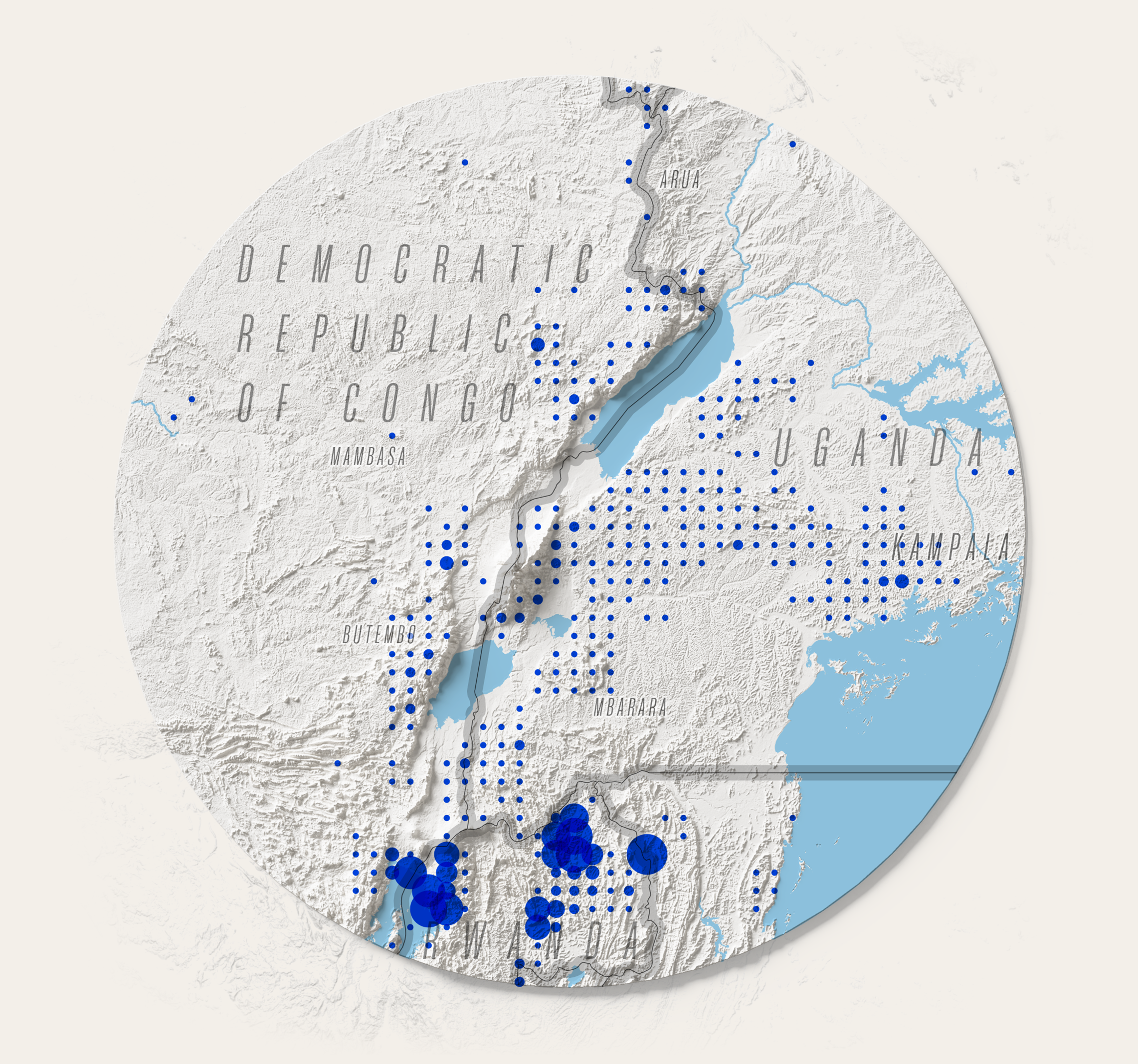

Downtown Arua, Uganda
The city’s streets hum with activity as boda boda taxis, roadside vendors, and street hawkers go about their business. Cross-border trade and travel make border cities vibrant with opportunity, which will grow as climate mobility increases.
Borderland areas will see dynamic movement
Across Africa, people are largely expected to move away from border areas in response to climate factors, although there are noticeable regional differences. Some border areas are forecast to attract people who are compelled to move in response to climate change. By 2050, dense clusters of climate mobility emerge in certain hotspots.
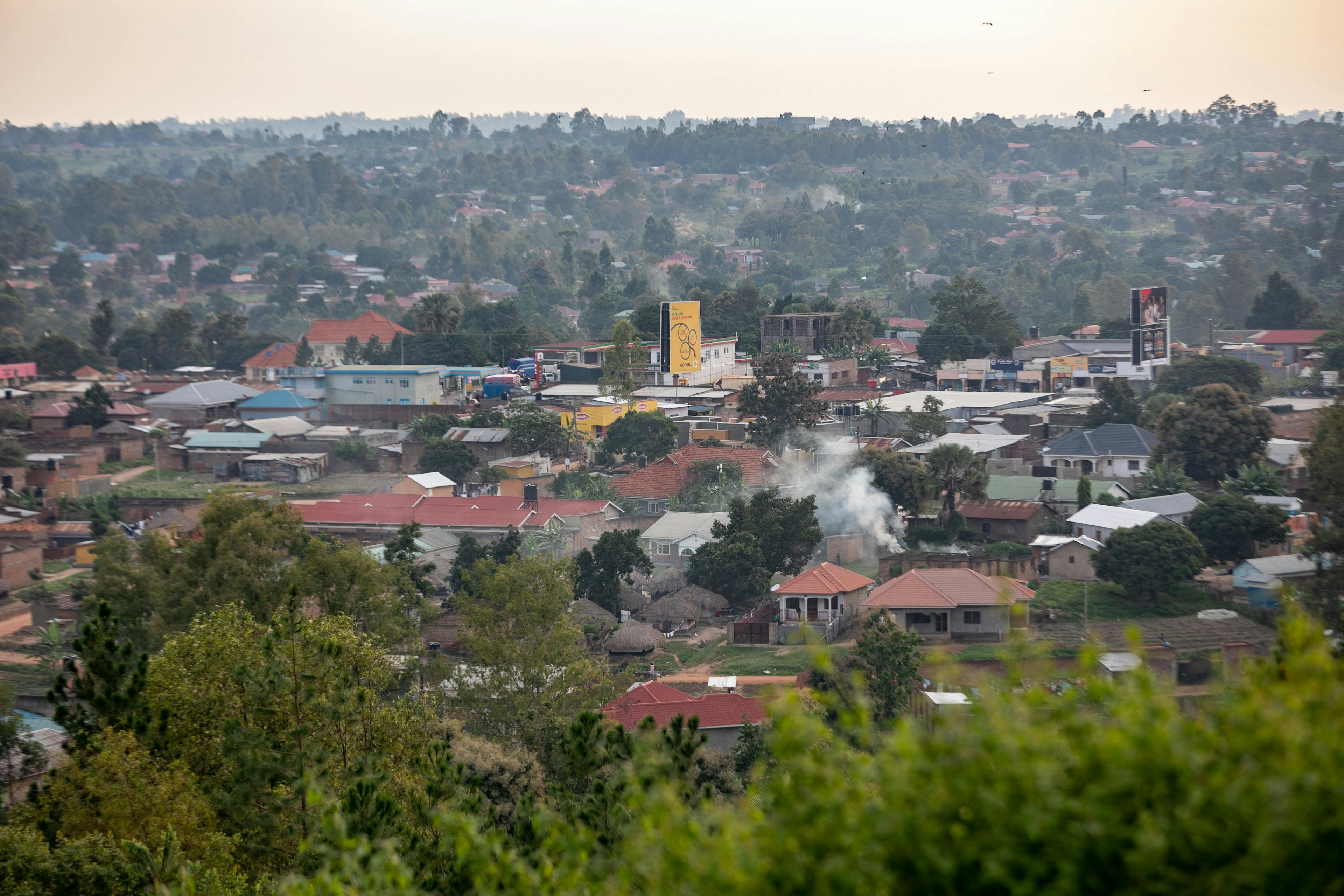
Arua, Uganda
The city is close to Uganda’s borders with South Sudan and the Democratic Republic of Congo (DRC). It is one of many border communities on the continent that could see big population shifts as people move in response to climate impacts.
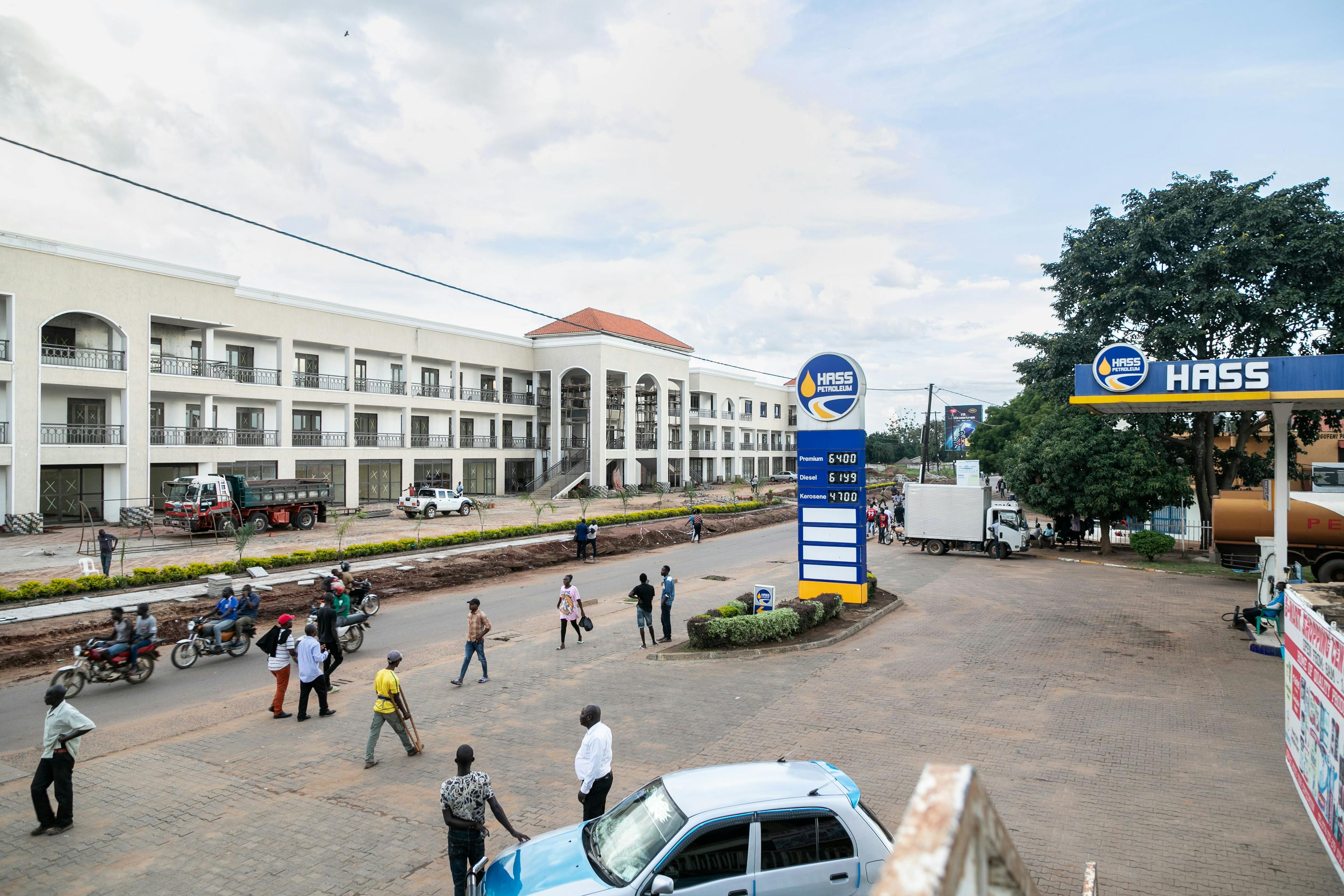
Arua-Pakwach Road, Arua
Football is the glue that holds people together across the region, regardless of nationality, faith, or history. The new Arua Hill Stadium, which includes shops, offices and apartments, strengthens community ties through a shared love of the game.
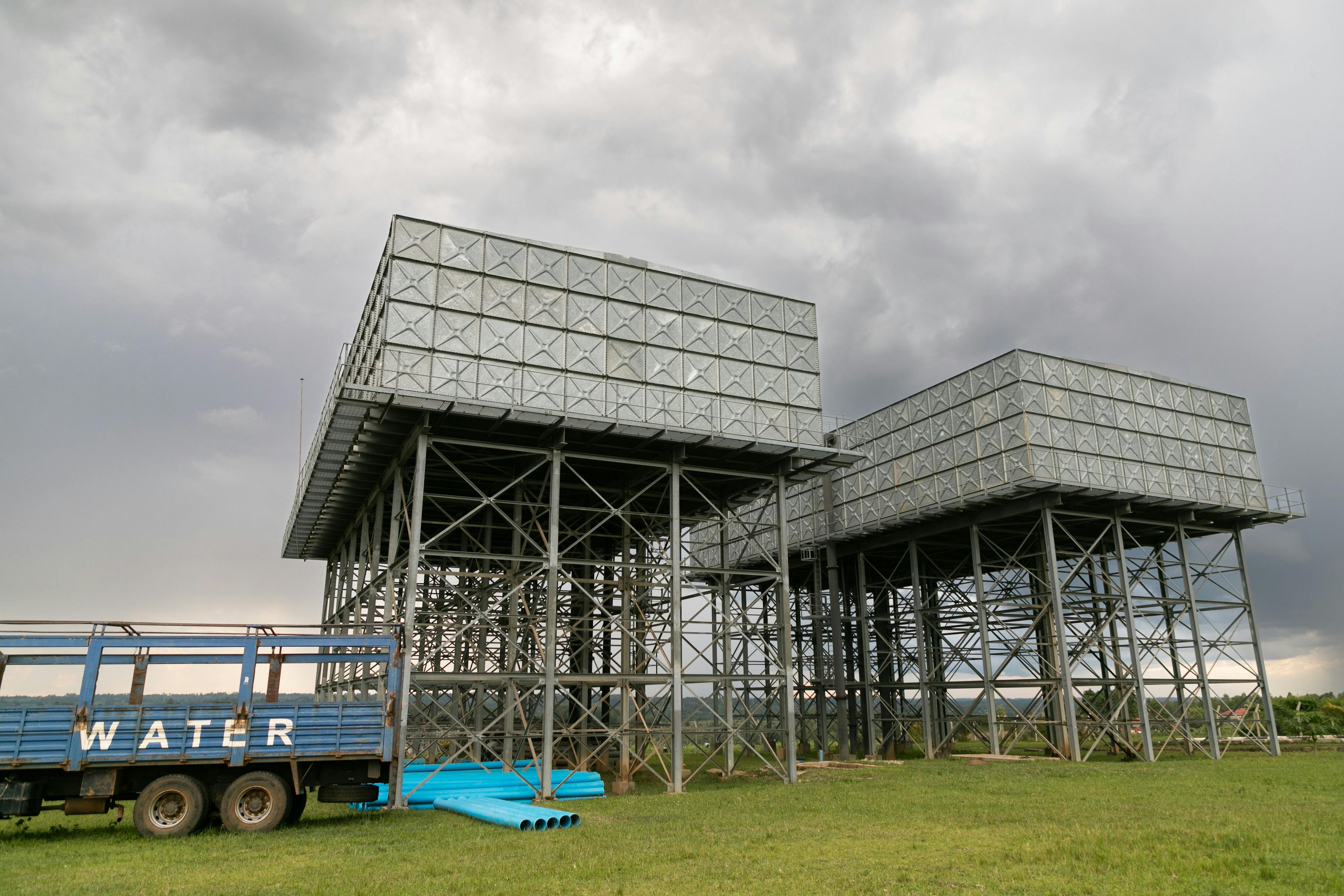
Giligili Reservoir, Arua Outskirts
This new development aims to boost Arua’s water supply. Service delivery is often patchy in remote border areas. Targeted investments can help prepare for future population shifts in border regions that will affect demand.
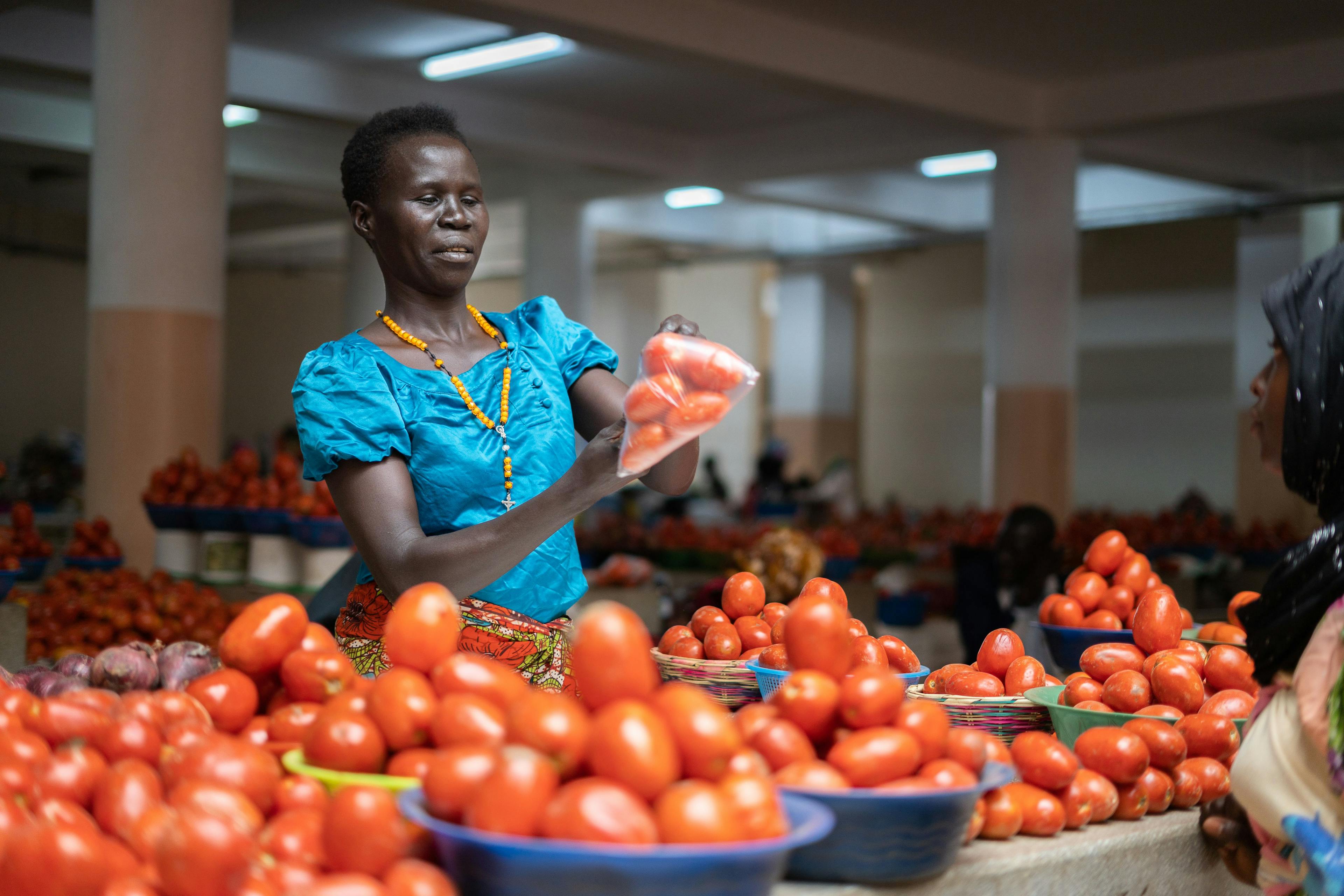
Central Market, Arua
Florence Anzaru (37) moved to Arua as a girl, and has been selling fresh produce here for 22 years. Women are the muscle behind much of Africa’s informal economy and cross-border trade, yet climate impacts could hit them particularly hard.

Sauriyaku Market, Arua
A barber gives his client a hair cut in a downtown salon. Cities’ vibrancy attracts people who are looking to access better job prospects, schooling, healthcare, and basic services. Cities also give people the chance to reinvent themselves.
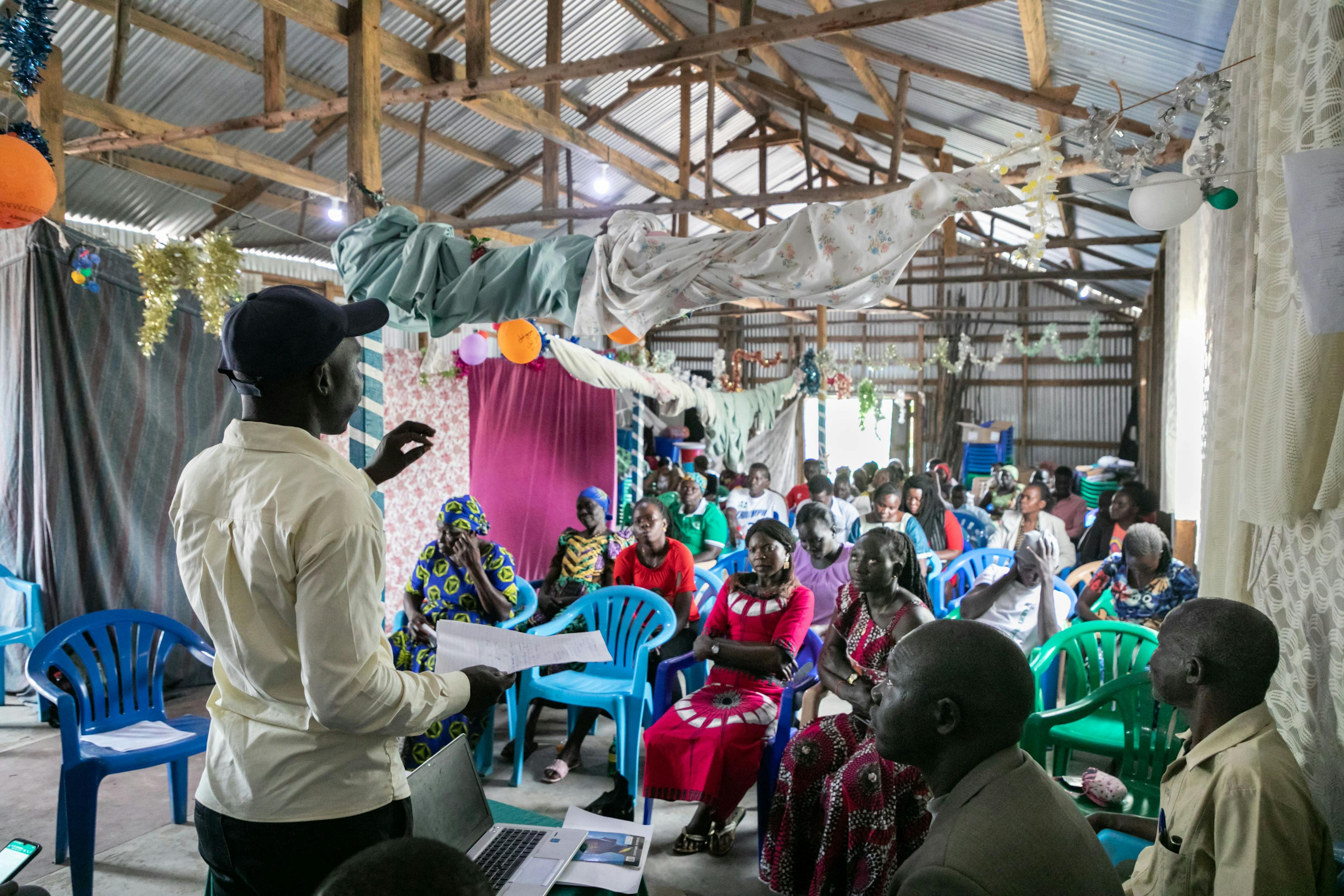
Arua, Uganda
Refugees from Maridi, South Sudan, meet regularly to support each other to keep girl children in school and care for those without husbands. Like other cities in border regions, Arua offers refuge for several such communities of displaced persons.
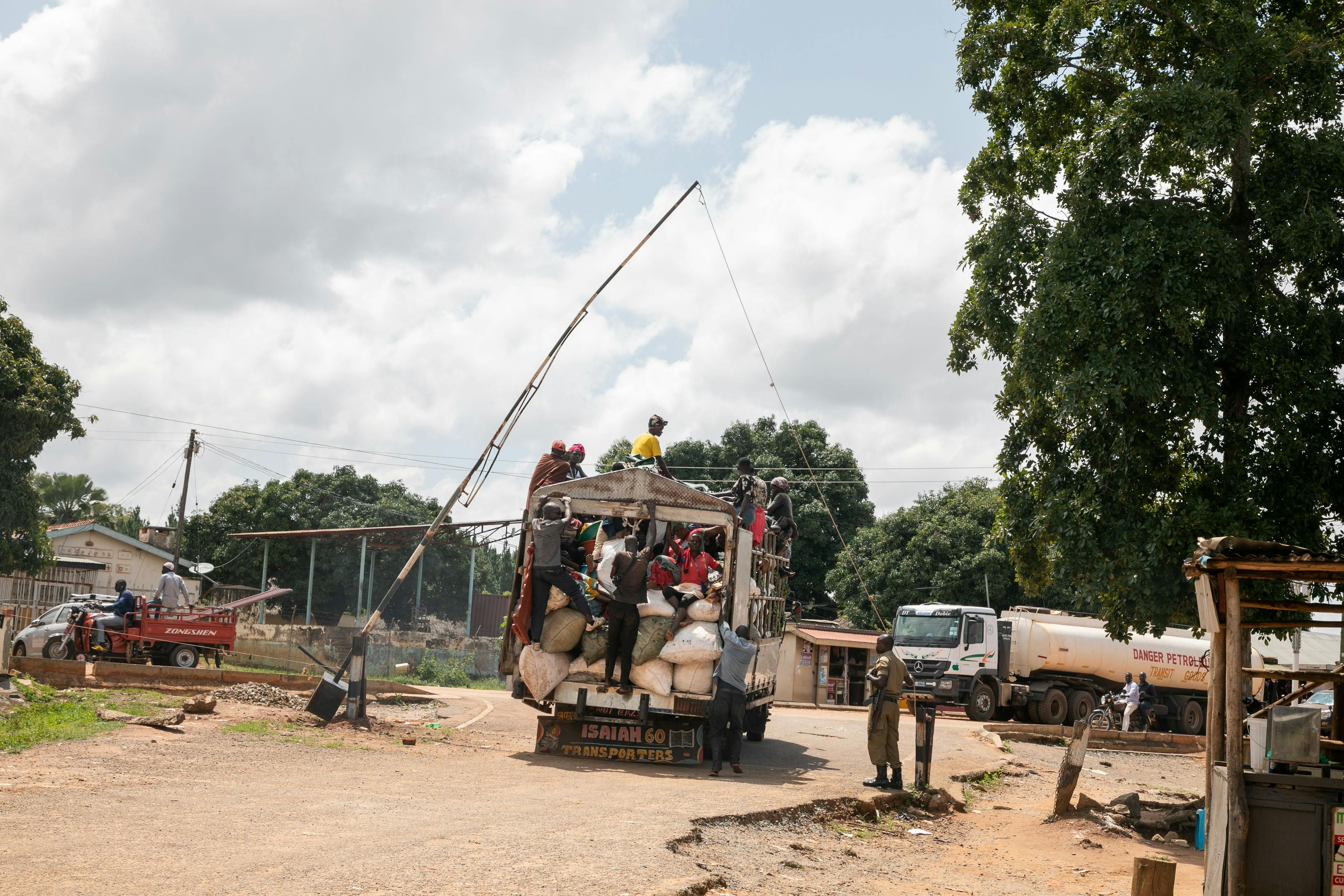
Vurra Customs Office, Near Uganda-DRC Border
Trucks crossing at the border between the DRC and Uganda are loaded with stock for trading in local markets. Trade links that connect communities across national boundaries are the lifeblood of many border areas.

Kampala Market, Near Uganda-DRC border
Borderlands typically have strong trade and travel ties. Women traders are at the heart of a vibrant supply chain that feeds local markets. They buy fresh produce such as rice, bananas, and ground nuts imported from the DRC to sell in Arua.
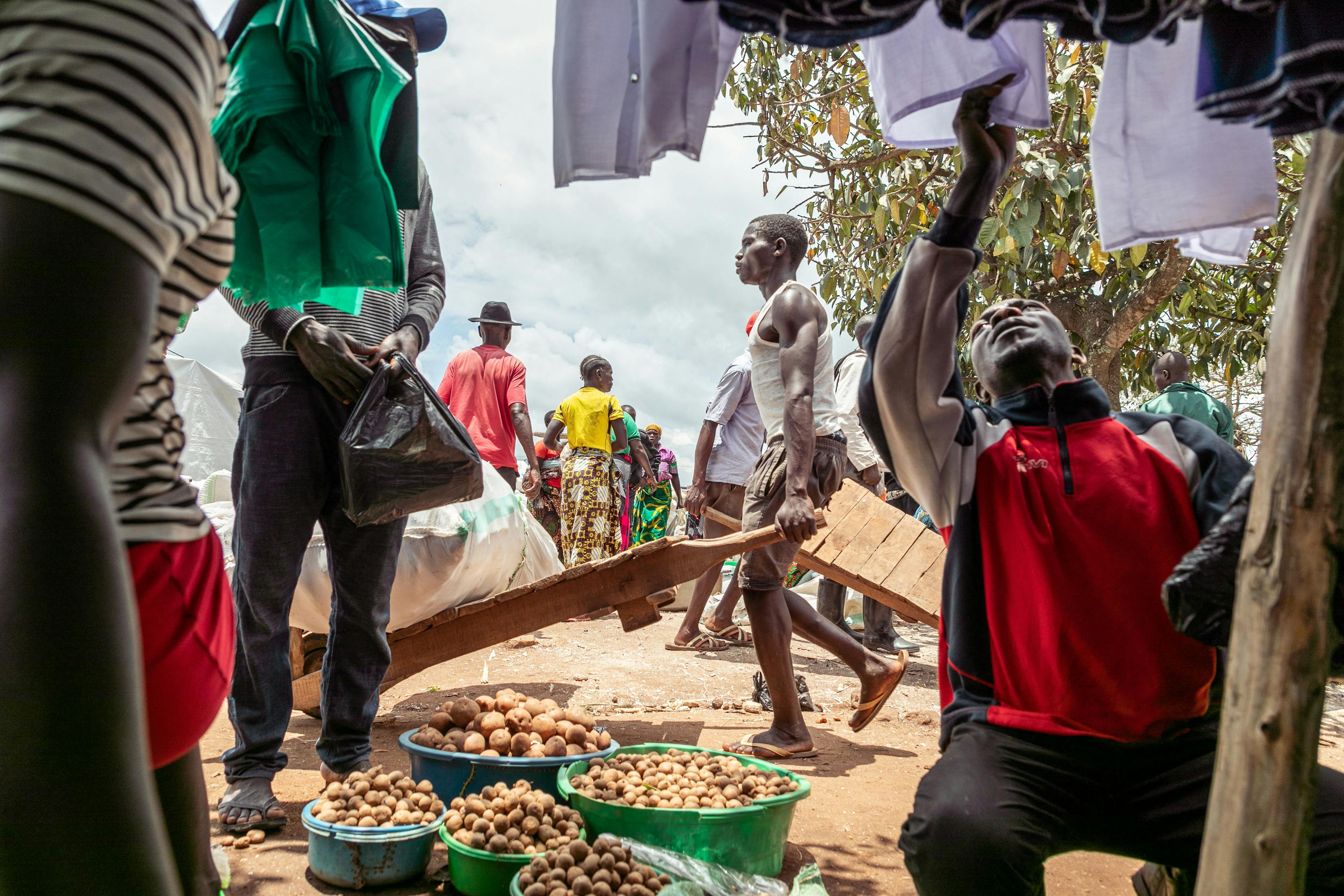
Kampala Market, Near Uganda-DRC border
Thousands of traders visit the market each week, where they earn an income through informal sales. Rather than slowing commerce, borders can allow local businesses and traders to profit from these opportunities.
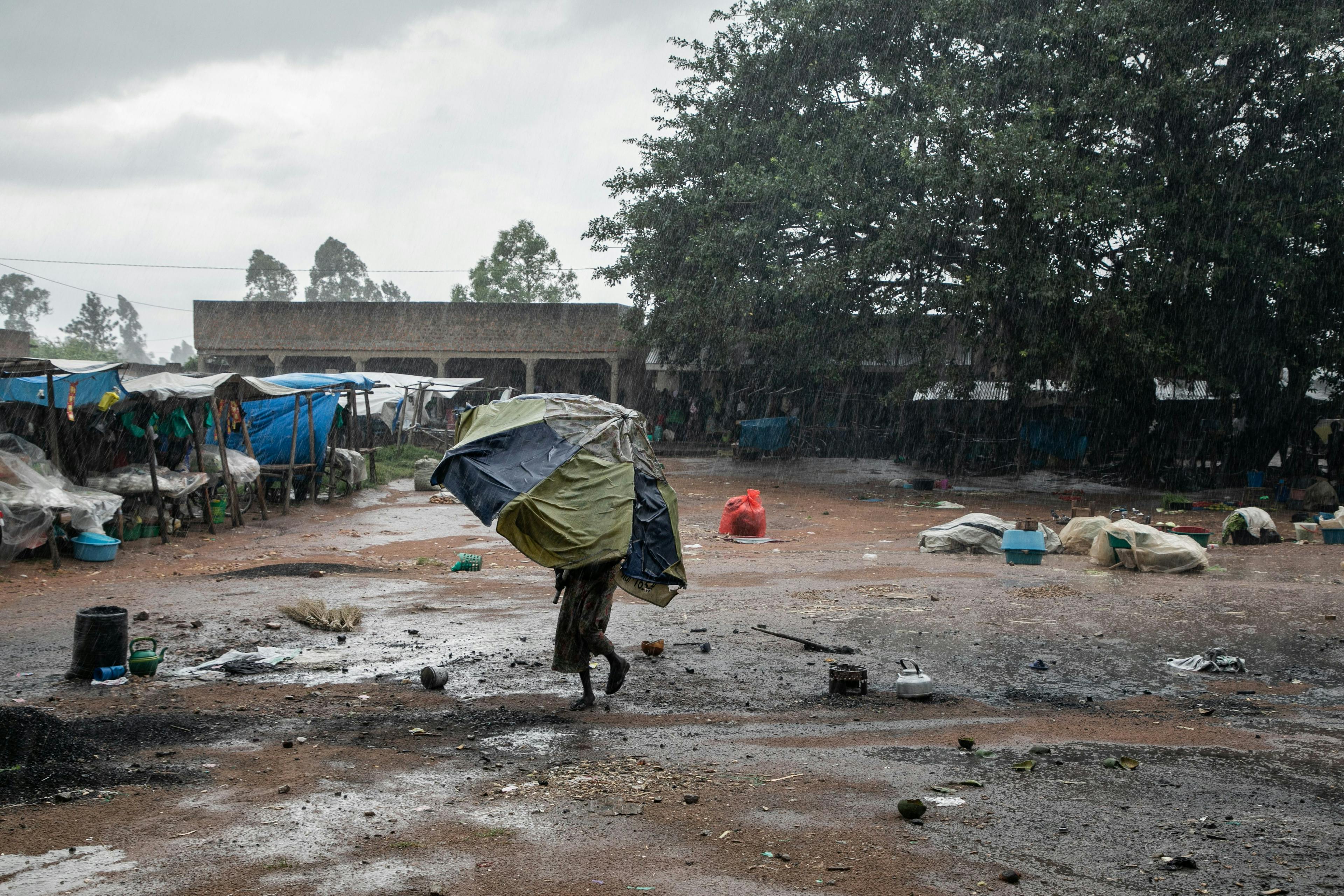
Odramacaku Fresh Produce Market, Arua Outskirts
This busy trading hub between the DRC and Uganda takes a beating during a storm. Supporting people in border areas with early warning systems and accessible climate information will help them prepare for and cope with more extreme weather events.
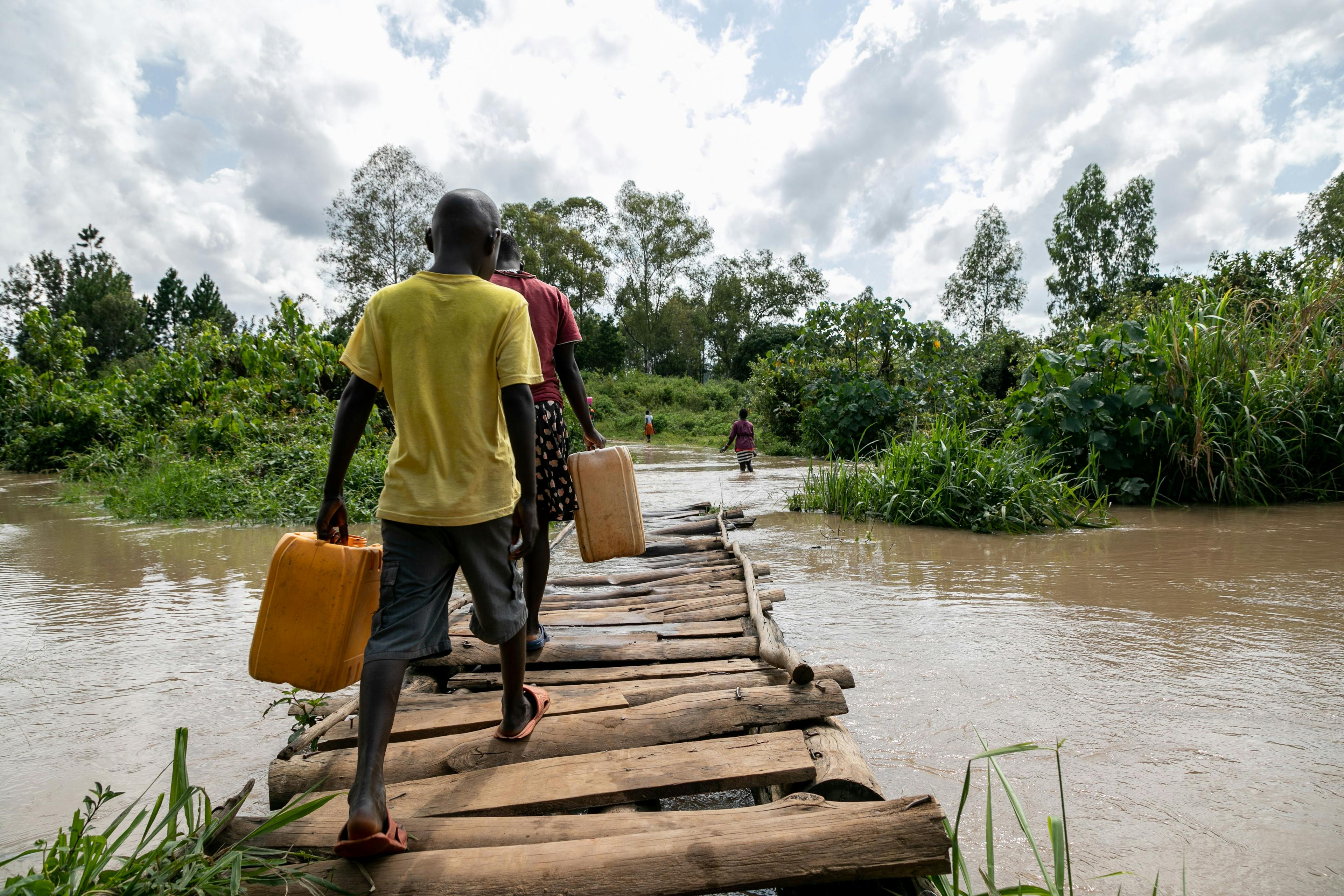
Enyau River, Arua
A temporary bridge allows foot traffic to cross the river after the original was washed away. Border areas often receive less support than capital cities. They need local cooperative solutions as climate mobility boosts cross-border connections.
On the margins: Borderland climate mobility hotspots
In the Democratic Republic of Congo, a substantial number of people are projected to leave low-lying and flood-prone areas in the west of the country. The population is expected to grow in Lubumbashi in the south, near its Zambian border, and the highlands in the east (the Rift Valley) along the DRC’s borders with Rwanda and Uganda. This is where climatic conditions are expected to be more favourable.
In the Horn of Africa, climate mobility is predicted to lead to an increase in population in Ethiopia’s borderlands with Somalia, reaching some 1.4 million people by 2050.
Other notable borderland climate mobility destinations in the region include the border area between Eritrea and Sudan, the Ethiopian side of its border with Eritrea and Sudan, and Somalia’s border with Kenya. In Malawi, climate mobility trends will largely be from source areas in the south, with people moving towards the middle and northern parts of the country. Mozambique will see movement towards its borders with Eswatini and South Africa. Nigeria’s borderland with Niger will be another significant climate mobility destination.
Figure 1
Internal climate migration hotspots (movements within countries) reflects the unequal and complex relationships between society and environment in a future with growing climate risks.
Internal climate mobility by 2050 under the Rocky Road scenario
People leavingPeople arriving
1M+
100k
10k
1k
100
0
100
1K
10K
100K
1M+

Source: ACMI Africa Climate Mobility Model, 2022
Spaces of refuge
Many African borderlands are already spaces of refuge that host large numbers of refugees and internally displaced persons (IDPs). Refugee and IDP camps are often located along borders as people try to stay close to their home communities, and as authorities seek to contain these populations. African communities are generally inclusive of newcomers, and peaceful coexistence is the norm. Yet, many border regions already suffer from under-investment, with limited government presence, rule of law, and service delivery. In a number of border areas, climate and conflict dynamics converge, with climate impacts expected to increase the potential for violence.
Figure 2
Borderland areas in East Africa that already see large-scale displacement are forecast to be hotspots for climate mobility in the future.
Internal climate mobility by 2050 in East Africa under the Rocky Road scenario
People leavingPeople arriving
1M+
100k
10k
1k
100
0
100
1K
10K
100K
1M+
Internally displaced people and refugee camps (UNHCR)

Source: ACMI Africa Climate Mobility Model, 2022
Various forms of illicit trade and cattle rustling, as well as state border security measures, make border crossings more perilous for pastoralists. Under these conditions, restrictive border policies combined with climate impacts can trap herders in areas where they are more exposed and vulnerable. These heightened risks bring them into conflict with state authorities, other pastoralist groups, or communities that are already settled.
Figure 3
Borderland areas in West Africa that already see large-scale displacement are forecast to be hotspots for climate mobility in the future.
Internal climate mobility by 2050 in West Africa under the Rocky Road scenario
People leavingPeople arriving
1M+
100k
10k
1k
100
0
100
1K
10K
100K
1M+
Internally displaced people and refugee camps (UNHCR)
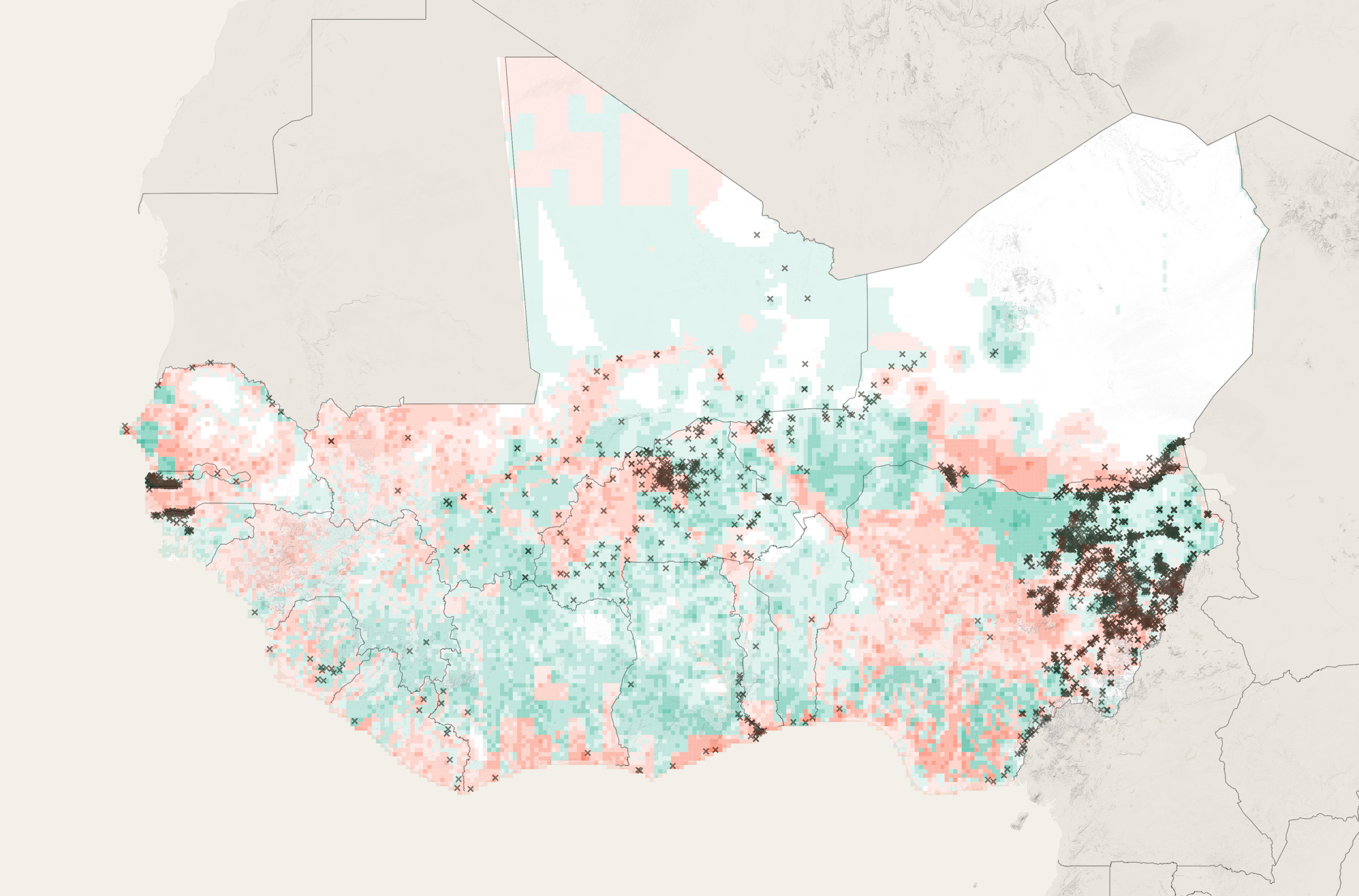
Source: ACMI Africa Climate Mobility Model, 2022
The Way Forward
Climate mobility will add additional layers of stress to already vulnerable border communities.
Borderland areas need targeted investments that extend national governance and services into these regions. Decentralised and place-based approaches to development, including joint trans-boundary development planning between localities on both sides, could address some of the challenges facing remote border areas and support them as hubs of economic activity. Climate services and accessible early warning mechanisms are also necessary, since levels of climate literacy and awareness are particularly low in these marginal areas. Lack of these services limits the ability of local actors to anticipate risks and adapt. This said, border areas also offer opportunities for harnessing existing community ties for enhanced cooperation. If supported with the right connecting infrastructure and services, border towns can be engines of climate resilient development through trade links and value chain development as well as joint management of shared natural resources.
